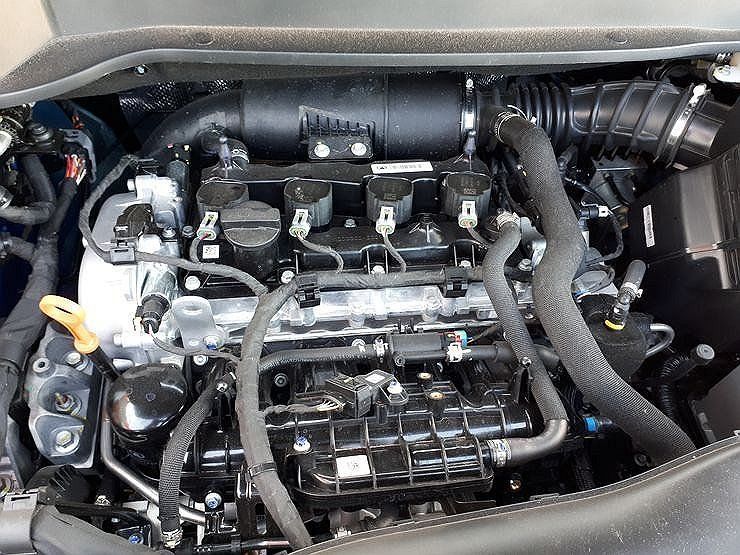Why the engine “eats” one oil, but does not consume the other
- May 30, 2023
- 0
Many drivers notice that after switching a lubricant from one viscosity to another, and even from one brand of oil to another, the engine suddenly begins to experience
Many drivers notice that after switching a lubricant from one viscosity to another, and even from one brand of oil to another, the engine suddenly begins to experience

In general, the internal combustion engine is obliged to “eat” a certain amount of lubricant, because no one has canceled such a concept as “garbage”. When the pistons move, an oil film always remains on the cylinder walls. It evaporates under the influence of the burning working mixture. But this evaporation can depend on many factors.
Let’s start with the pleasant. A completely new “steel heart” (especially German) has a decent “appetite” at first, and then gradually passes. This indicates that the walk-in is over. The fact is that the surfaces of the piston rings initially have a roughness of several micrometers, so they must be rubbed. Running-in reduces these roughnesses by an order of magnitude. Here the consumption of “slurry” is reduced. That is why it is always useful to perform the so-called TO-0. In this case, you can not even experiment with viscosity.
Another thing is when the unit is used and the driver decides to save money. Say, instead of 5W30, enter 0W20, although the manufacturer does not recommend it. “Nulevka” will behave like water, so it will end quite quickly. Well, if the oiler icon on the instrument panel does not light up.
However, many drivers don’t act that drastic. But a “change” such as 5W40 instead of 5W30 is often used. What happens in this case?
According to the SAE standard, the viscosity of the W30 composition should be 2.9 MPa * s, and W40 – 3.51 MPa * s. The kinematic viscosity of W30 at a temperature of +100 °C should be in the range of 9.2-12.7 mm2/s. For the W40 brand – in the range of 12.7-16.4 mm² / s. If we translate this into human language, it turns out that under high load the “thirty” will burn out faster than the “forty”. Therefore, in the summer it is better to use the latter. Especially if you often drive in traffic jams and the engine has a low volume and is even supercharged.
Another situation: the oil burner wakes up after replacing, for example, Lukoil with Castrol. Unfortunately, this may indicate that a fake has been flooded. The jerry can of the leading brand contained an unidentified substance with unpredictable characteristics. Conclusion – urgently in service for a second replacement. Otherwise you can just kill the power source.

In general, the internal combustion engine is obliged to “eat” a certain amount of lubricant, because no one has canceled such a concept as “garbage”. When the pistons move, an oil film always remains on the cylinder walls. It evaporates under the influence of the burning working mixture. But this evaporation can depend on many factors.
Let’s start with the pleasant. A completely new “steel heart” (especially German) has a decent “appetite” at first, and then gradually passes. This indicates that the walk-in is over. The fact is that the surfaces of the piston rings initially have a roughness of several micrometers, so they must be rubbed. Running-in reduces these roughnesses by an order of magnitude. Here the consumption of “slurry” is reduced. That is why it is always useful to perform the so-called TO-0. In this case, you can not even experiment with viscosity.
Another thing is when the unit is used and the driver decides to save money. Say, instead of 5W30, enter 0W20, although the manufacturer does not recommend it. “Nulevka” will behave like water, so it will end quite quickly. Well, if the oiler icon on the instrument panel does not light up.
However, many drivers don’t act that drastic. But a “change” such as 5W40 instead of 5W30 is often used. What happens in this case?
According to the SAE standard, the viscosity of the W30 composition should be 2.9 MPa * s, and W40 – 3.51 MPa * s. The kinematic viscosity of W30 at a temperature of +100 °C should be in the range of 9.2-12.7 mm2/s. For the W40 brand – in the range of 12.7-16.4 mm² / s. If we translate this into human language, it turns out that under high load the “thirty” will burn out faster than the “forty”. Therefore, in the summer it is better to use the latter. Especially if you often drive in traffic jams and the engine has a low volume and is even supercharged.
Another situation: the oil burner wakes up after replacing, for example, Lukoil with Castrol. Unfortunately, this may indicate that a fake has been flooded. The jerry can of the leading brand contained an unidentified substance with unpredictable characteristics. Conclusion – urgently in service for a second replacement. Otherwise you can just kill the power source.
Source: Avto Vzglyad
Donald Salinas is an experienced automobile journalist and writer for Div Bracket. He brings his readers the latest news and developments from the world of automobiles, offering a unique and knowledgeable perspective on the latest trends and innovations in the automotive industry.